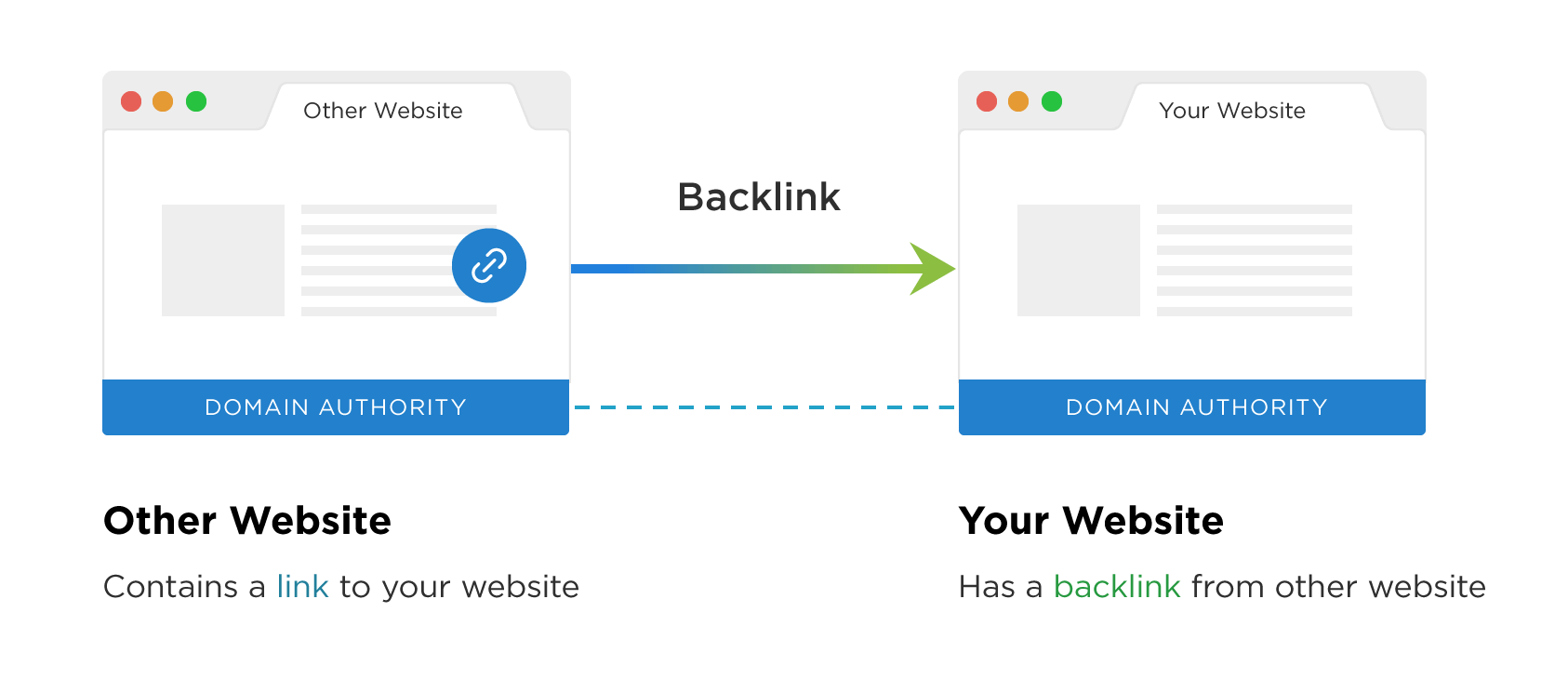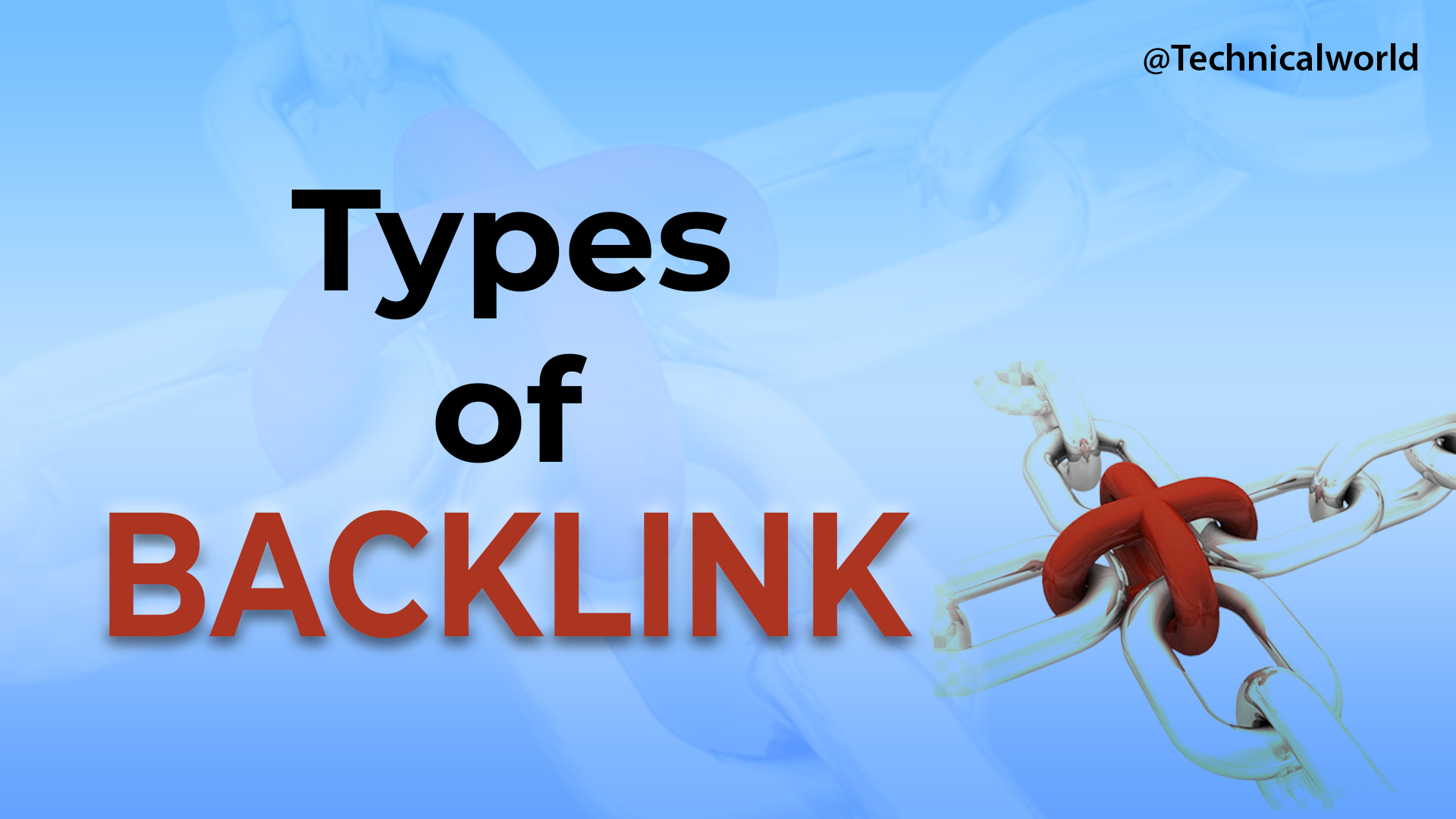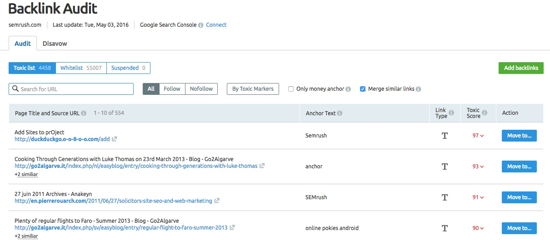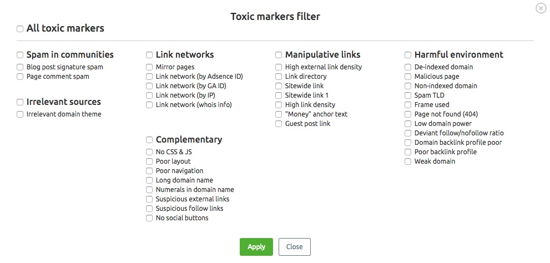Backlinks are the most common term used in Search Engine Optimization (SEO). Backlinks are the links to your web pages that appear on other sites, social media platforms, and other web-based locations. Backlinks are also called inbound links on other websites that direct visitors to your certified site. These are generally denoted as link buildings which are vital for website authority and relevance.
Backlinks with reputable sites serve a crucial role in Google’s search results. They are known to improve the SEO rankings of the website. High-quality backlinks from well-known sites state that your content is valuable and authorized. Webpages with more backlinks rank on top of Search Engine Result Pages (SERPs).

How do backlinks work in SEO?

- Credibility: SEO considers backlinks as a form of recommendation. The backlinks to another site are seen as a vote of confidence for the linked site’s content.
- Popularity and trust: The quality and quantity of the backlinks indicate their trustworthiness and popularity. If the backlinks have appeared on multiple well-known sites, then it means the site’s link is engaging and relevant to users.
- SEO algorithms: Some complex algorithms determine where the site should appear in search engine results. These factors are also considered through backlinks. A website with effective and strong backlinks is more likely to rank higher on SEO.
- Anchor text: The text used in backlinks is known as Anchor text. Optimizing anchor text with relevant keywords improves the backlink’s SEO value.
- Quality over quantity: Backlinks quality over quantity matters the most to improve the site ranking on search engines. Top-quality backlinks from authoritative sites have a more positive impact on SEO than spammy links.
- Organic growth: Search engines are vigilant in detecting spammy backlinks. It acquires backlinks through best-quality content that effectively capture link and contribute to long-term SEO success.
Building strong backlinks includes high-quality content that is linked to another website for guest posting and collaboration opportunities, ensuring that your site offers authoritative information.
Intrinsically, backlinks are an important part of Search Engine Optimization. They are one of the various factors that influence a website’s ranking on Search Engines.
Types of Backlinks
 Backlinks are categorized into two main types entails below:
Backlinks are categorized into two main types entails below:
- Nofollow backlinks: A Nofollow tag tells the search engine not to follow a particular link, and indicates the website doesn’t endorse the content. It does not pass any link juice or authority from one site to another. It does not count the link as a vote of confidence for the linked site. Nofollow links do not directly lead to SEO but still drive traffic and visibility.
- Dofollow backlinks: A Dofollow backlink is a link that transfers authority or “link juice” from one website to another. It instructs search engines to follow the link and take it as a recommendation for the domain to which it is linked. The most valuable backlinks in SEO are those that are Dofollow since they raise a website’s domain authority and its search engine rankings.
Other types of backlinks:
- Natural backlinks: These are the organic backlinks that you gain naturally with a hassle-free procedure. If your content is valuable, informative, and interesting, it attracts more visitors from other sites.
- Editorial backlinks: The backlinks are included in the content by the site editors or content creators because they understand that the liked content provides value to the readers.
- Comment backlinks: Links that you add in the comment section of the blog post or articles. However, many websites use nofollow links to avoid scams.
- Profile backlinks: Profile backlinks contribute to the online presence of your business. These are the links from the profiles created on various platforms to elevate your online presence.
- Reciprocal backlinks: When the two websites showcase each other’s content, it is called a reciprocal link. However, excessive reciprocal links can be shown to be manipulative for SEO.
- Authority backlinks: These links come from reputed and well-known sites in your industry. Backlinks from well-known sources are effective as compared to SEO value.
- Contextual backlinks: These are embedded in the contextual part of the page. These are more valuable because they integrate with the flow of the content.
- Image backlinks: Image backlinks are referred to the use of images from your website and links as the image source.
- Forum and community backlinks: These are known as the links in the forum signature, posts, and community. Some forums use nofollow tags on these links.
- Press release backlinks: Links that are released from press releases about your product or services and content.
- Social media backlinks: Link posted on various social media platforms helps to boost web traffic and content engagement.
- Educational and government backlinks: These links are authoritative since they are generated from educational institutions and government websites.
Where Can I Find Backlinks?
Finding the notable links requires a combination of research, relationship building, and creating the best content.
- Guest blogging- This is the process of reaching out to the blogs and websites of your relevant industry. You can add the backlinks to your site in the author bio or within the content itself.
- Resource pages: Many websites have lists and resources related to the specific topic. Those pages and such content signify that your content is relevant and authentic.
- Content promotion: Sharing valuable, unique, and informative content on social media, forums, and communities. Make sure that your content stands out so that people can naturally link to it.
- Community engagement: Participate in social media contests, forums, and discussion boards related to your industry. Share your relevant content as it keeps your consumers engaged.
- Collaboration and partnership: It’s good to partner with content creators, bloggers, and other businesses to cross-promote your content. This can help to valuable backlinks and boost exposure.
- Research and data: You must have in-depth knowledge about the relevant industry. Conduct research, surveys, or studies and deliver data-driven content that is linked to other sites.
How do I check the backlinks I have?
- Google search console : It is a free tool that offers valuable insights into the performance of your site in Google search results. It includes a “link” section which is pointed to your site.
- Backlink checker websites : You may enter your website’s URL into several internet tools to acquire a list of some of the hyperlinks pointing to it. Examples are Backlink Watch, Monitor Backlinks, and Small SEO Tools.
- Third-party backlinks tools : These are common backlink tools that allow users to link their web pages to another website.
- Ahrefs
- Moz’s link explorer
- SEMrush
- Competitor analysis : It also helps to analyze the backlinks of your competitors which provides you with insights into where your competitors are getting backlinks and help you to recognize the potential opportunities.
- Paid backlinks tools : Some backlinks tools offer keen detailed information with the tools Majestic and cognitiveSEO.
Therefore, it’s crucial to understand how to respond to these 3 questions:
- Where can I find all my backlinks?
- How can I know if they are toxic?
- How can I contact toxic backlink site owners?
Fortunately, the solution is simple with the appropriate equipment.
Google Search Console can be used to expand your website and view your backlinks, however it can be time-consuming and has some limitations.
But there are quicker and more effective tools out there. For instance, you can immediately respond to all three of those significant questions and many more by using SEMrush.
There are two main sections of SEMrush dedicated to backlinks. The Backlink Audit area is the second, and the first is the Backlink Analytics portion, which enables you to research your competition.
Since the Backlink Audit area allows you to discover all of the backlinks to your site, let’s take a brief look at it.
The Backlink Audit tool from SEMrush then examines each backlink and separates the dangerous ones. By doing this, you may identify and remove harmful backlinks from your website before Google penalises it.
And one of SEMrush’s best features is that you can email the proprietor of a harmful website directly from the user interface.
With a service like SEMrush, you can monitor your backlinks, check your competitors’, and conduct keyword research all in one simple location.
Monitoring your backlink profile is a crucial component of your site’s SEO strategy because it may reveal a lot about the worth of your website.
We sincerely hope that this article has helped you understand what backlinks are and how to use them to expand your website.
Related Reading:

Thanks for sharing.